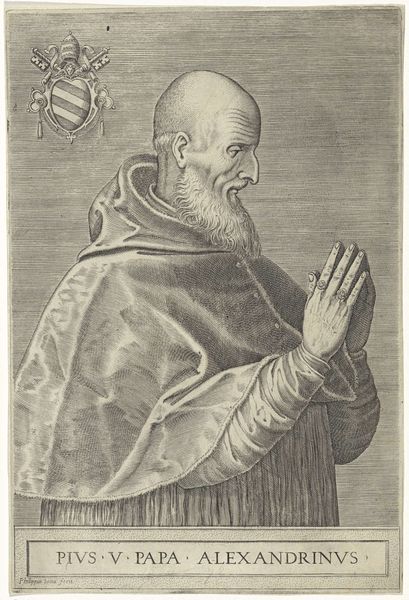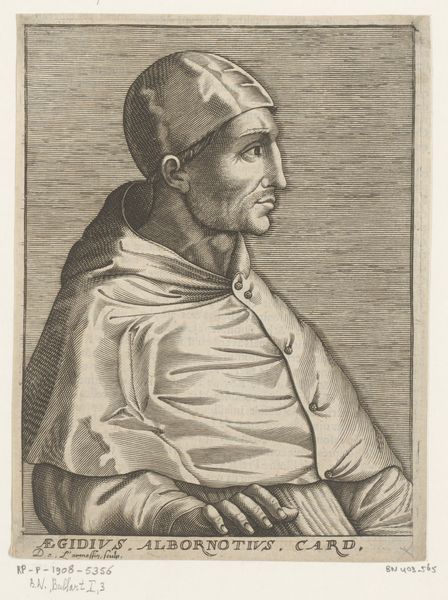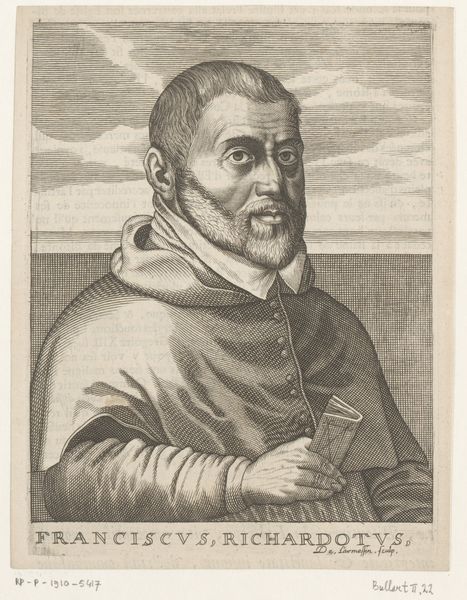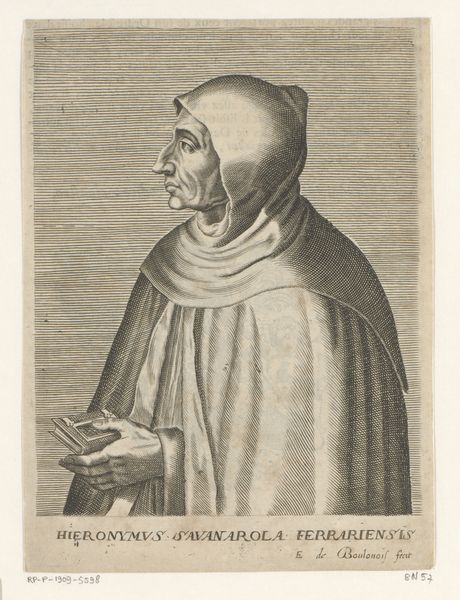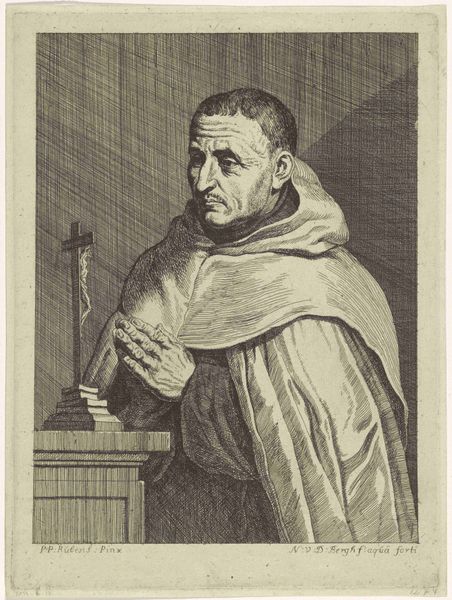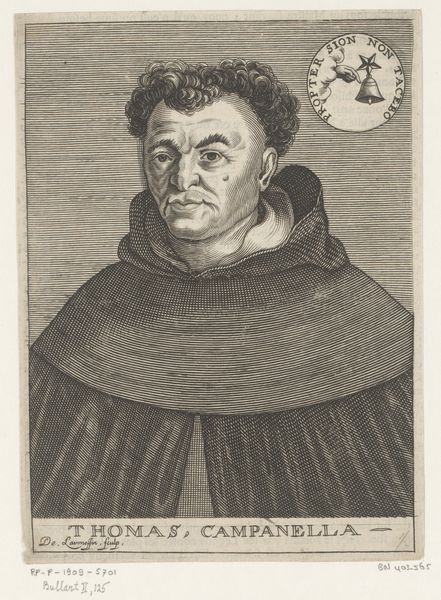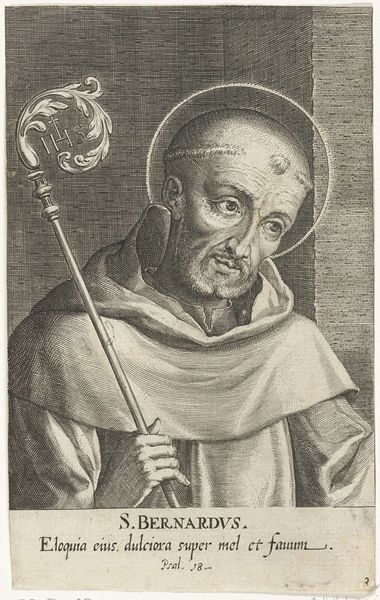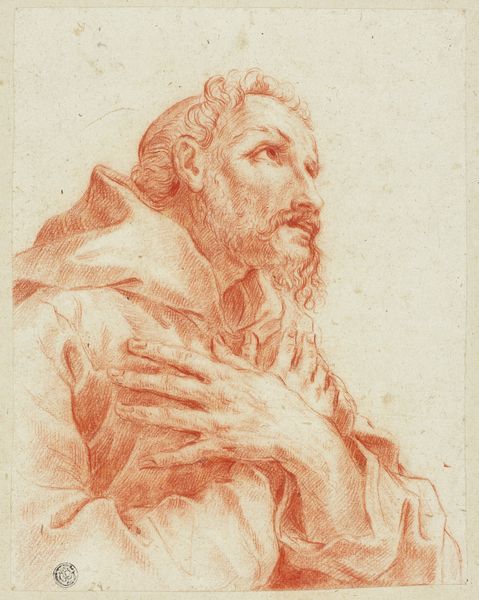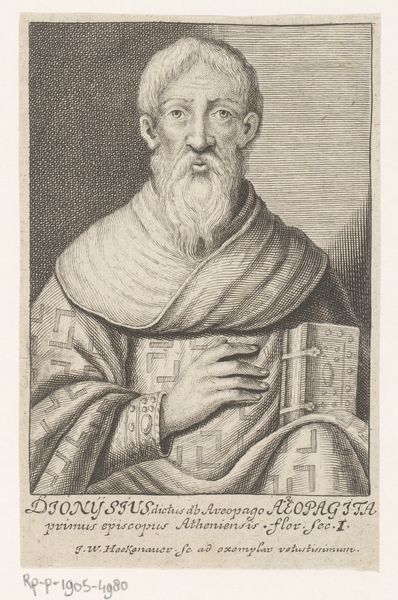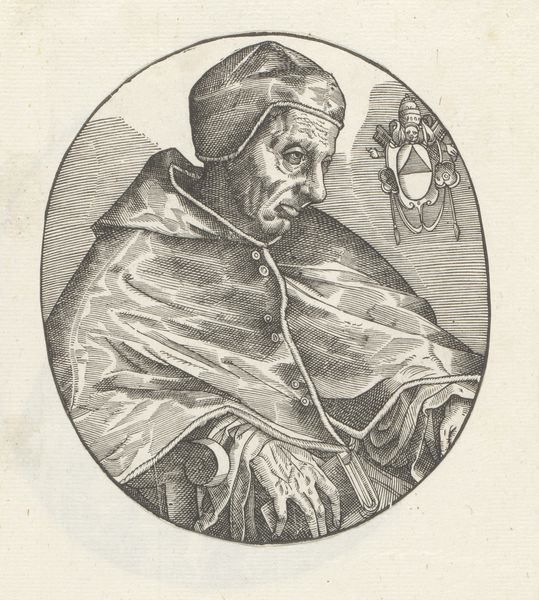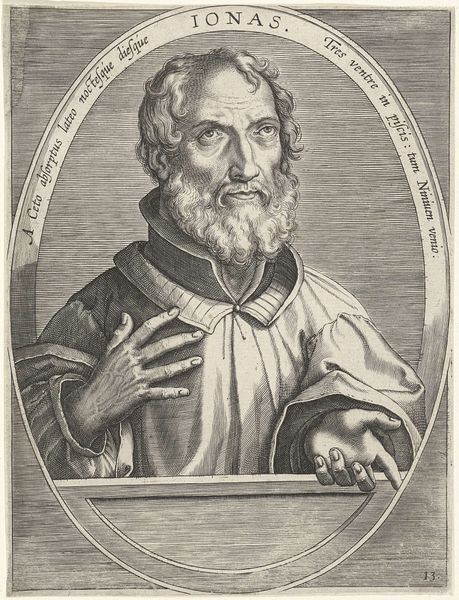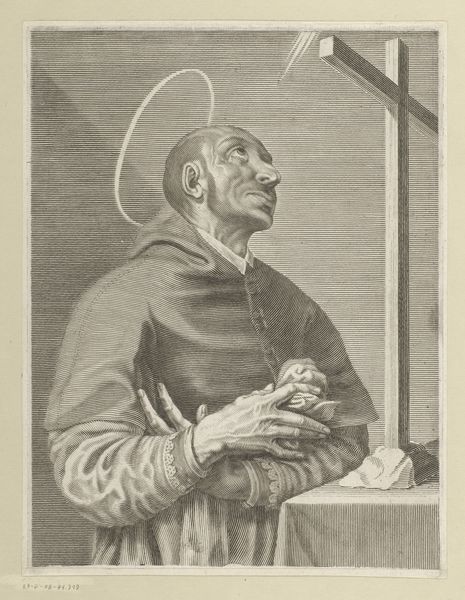
engraving
#
portrait
#
baroque
#
charcoal drawing
#
pencil drawing
#
line
#
portrait drawing
#
history-painting
#
italian-renaissance
#
engraving
Dimensions: height 179 mm, width 117 mm
Copyright: Rijks Museum: Open Domain
Claude Boizot made this print of Joseph of Cupertino, the Italian Conventual Franciscan friar, using engraving. The image's meaning is created through visual codes and historical associations that speak to the social and religious context of its time. In the Counter-Reformation, the Catholic Church promoted certain saints as examples of piety to solidify its cultural authority. The depiction of Joseph in monastic robes identifies him with the Franciscan order, known for its commitment to poverty and service. The saint’s pious gaze and hands clasped in prayer were common in religious portraiture and promoted specific beliefs about the relationship between earthly life and divine grace. Understanding this artwork requires examining the historical and institutional forces that shaped its production. Research into the Counter-Reformation and the role of religious orders and institutions in the 17th century can offer insights into the image's intended audience and broader socio-cultural implications. The meaning of the artwork is contingent on the social and institutional context.
Comments
No comments
Be the first to comment and join the conversation on the ultimate creative platform.
